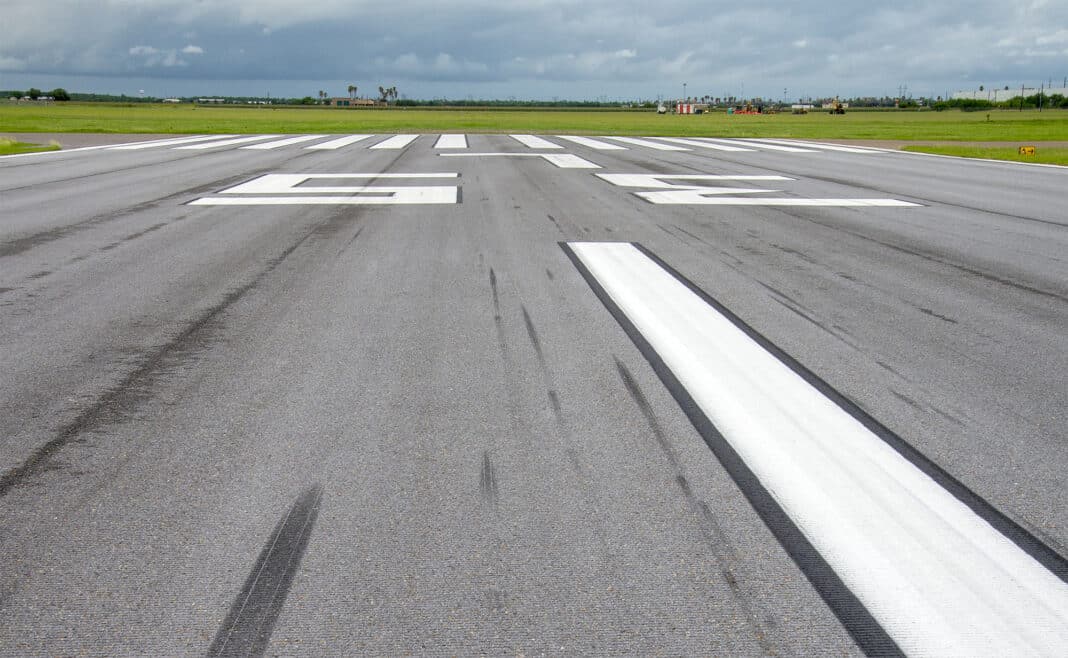HARLINGEN — The extension of Valley International Airport’s runway 17R/35L, already the longest in the Valley, has been green-lighted by the Federal Aviation Administration and design work is to begin this month.
The $15.5 million construction project will lengthen the runway from 8,301 feet to 9,400 feet. It is one of three runways in use at the airport.
“We have been piece-mealing this runway extension probably for about three-and-a-half, four years, trying to get it through planning, budgeting, getting the FAA’s buy-off on it,” Bryan Wren, assistant director of aviation at VIA, said Tuesday.
“Four years ago we started the benefit cost-analysis, and usually the FAA likes a 1-to-1 ratio, but it actually came back three times the benefit over the cost,” he added.
Wren said funding for the project will come from the FAA’s Airport Improvement Program and the fee the airport charges transiting passengers called the Passenger Facility Charge, or PFC.
“So there will be no local dollars used on this project,” Wren said. “This project will be done without a single city taxpayer dollar.”
Land buy
The extension of runway 17R/35L will take place to the south on land the airport already owns and is within the airport’s current fence line.
“However, the FAA requires the airport to secure property to protect the runway protection zone,” he said, noting this requires the purchase of agricultural land south of the airport. “That process has already basically been completed. An agreement with all landowners has been done and we’re looking to close, I think, within the next seven days.”
The land at the ends of the airport’s runways is not owned by the airport but the properties are subject to navigation easements. These limit how the land can be used, and even what crops can be grown due to possible safety problems with bird numbers.
Cargo haulers
A longer runway is a safety protection for all flights landing and taking off from the airport, and all of the airlines operating out of VIA submitted letters of recommendation for the project to the FAA.
But the biggest beneficiaries will be the air cargo haulers, like Fedex and DHL. Both have significantly increased their operations at VIA over the past several years, despite FAA restrictions on the amount of cargo they can carry due to runway length.
“Cargo carriers are operating on restricted flight loads, and this will actually help lift those flight restrictions off of their aircraft,” Wren said. “Their cargo capacity is going to go from 42 percent to over 70 percent, which is usually about where they max out their cargo loads anyway. They don’t ever go to 100 percent on cargo loads.”
“They can get more product and more materials and supplies in and out of the airport, which of course for them is increased revenue, but it also creates more jobs for loaders and package handlers,” Wren added.
Minimal disruption
VIA officials submitted an environmental assessment for the runway extension, a federal requirement, about a year ago and it came back clear, Wren said.
Design work will take about nine months, and he said the airport plans to break ground on the new runway in about a year.
“Because the airport has two other runways, it will minimally impact airport operations,” Wren said. “While the project is being constructed the aircraft can use runways 13-31 (7,257 feet) and 17L (5,949 feet).”
Wren said new navigation systems have been, or will be, installed on the other runways in anticipation of closing down 17R/35L for the extension construction. These landing systems aid pilots landing on instrument navigation.





